USB-A vs. USB-C: Speed, Power, and Performance
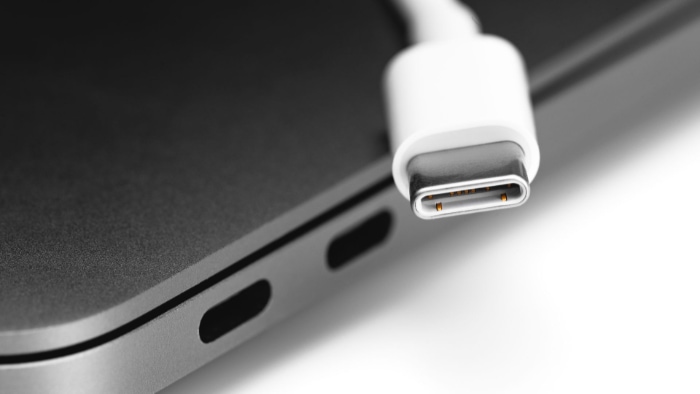
USB connectors have quietly played a crucial role in shaping our digital experiences. From the early days of USB-A to the advent of USB-C, these small but mighty ports have undergone significant transformations to keep pace with evolving device needs.
While USB-A has been a reliable workhorse for years, USB-C has stepped into the spotlight, promising a new era of connectivity. But what sets these two standards apart? How do their differences impact our everyday use of technology?
Physical Design and Construction
The physical design and construction of USB connectors play a crucial role in their functionality and user experience. USB-A and USB-C have distinct differences in their shapes, sizes, and overall design that impact how they are used and integrated into various devices.
Connector Shapes and Dimensions
USB-A connectors have a rectangular shape with dimensions of approximately 12mm x 4.5mm. This design has been a standard for many years, featuring a plastic insert inside the metal housing that contains the pins for data and power transfer.
The shape of USB-A connectors requires users to orient them correctly before insertion, which can sometimes be frustrating.
In contrast, USB-C connectors have a more compact and symmetrical design. They measure about 8.4mm x 2.6mm, making them significantly smaller than their USB-A counterparts.
The USB-C connector has a rounded rectangular shape with no specific up or down orientation. This design allows for easier insertion and a sleeker profile on devices.
Reversibility Advantages
One of the most notable improvements of USB-C over USB-A is its reversible nature. USB-C connectors can be plugged in either way, eliminating the need to check for the correct orientation before insertion.
This feature greatly enhances user convenience and reduces the risk of damage to the port or connector due to improper insertion attempts.
The reversibility of USB-C is made possible by its symmetrical design and the arrangement of its pins. The connector has 24 pins arranged in a way that allows for correct connectivity regardless of orientation.
This design not only improves ease of use but also contributes to the connector's versatility in supporting various protocols and functions.
Durability and Lifespan
Both USB-A and USB-C connectors are designed to withstand repeated use, but their construction affects their durability and lifespan. USB-A connectors typically have a rated lifespan of around 1,500 insertion and removal cycles.
The larger size of USB-A connectors can make them more robust in some situations, but they are also more prone to damage if excessive force is applied during insertion.
USB-C connectors, despite their smaller size, are engineered for improved durability. They are rated for approximately 10,000 insertion and removal cycles, significantly surpassing the lifespan of USB-A connectors.
The symmetrical design of USB-C also contributes to its durability by reducing the likelihood of damage from incorrect insertion attempts.
Port Size Considerations
The size difference between USB-A and USB-C ports has significant implications for device design and functionality. USB-A ports require more space on a device, which can limit the number of ports that can be included, especially on smaller devices like laptops and smartphones.
USB-C's smaller port size allows device manufacturers to include more ports in a given space or to create thinner devices.
This has led to an increase in the number of USB-C ports on modern laptops and other devices, offering users more connectivity options without compromising on device size or design.
The compact nature of USB-C ports also enables their integration into smaller devices where USB-A ports would be impractical. This has facilitated the adoption of USB-C in a wide range of products, from smartphones and tablets to gaming consoles and audio equipment.
Additionally, the smaller size of USB-C ports has encouraged the development of multi-function ports. A single USB-C port can often handle data transfer, video output, and power delivery, reducing the need for multiple specialized ports on a device.
This versatility has led to cleaner device designs and improved port management for users.
Technical Specifications
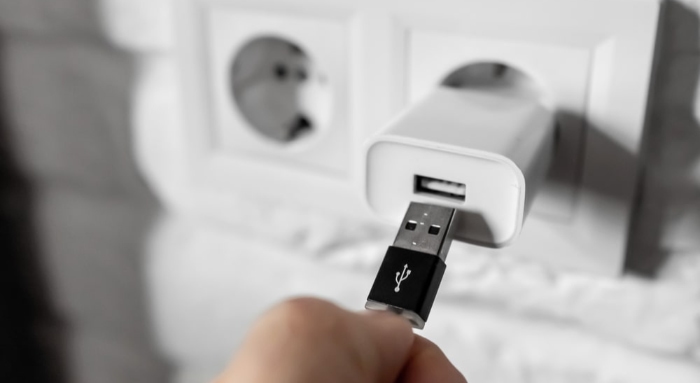
The technical specifications of USB-A and USB-C connectors are crucial in determining their performance and capabilities. These specifications encompass various aspects such as data transfer speeds, power delivery capabilities, bandwidth limitations, and protocol support.
Data Transfer Speeds
USB-A connectors have been used with multiple USB standards over the years, each offering different data transfer speeds. The original USB 1.1 standard supported speeds up to 12 Mbps. USB 2.0, which is still widely used, increased this to 480 Mbps.
USB 3.0, later renamed USB 3.1 Gen 1, further improved speeds to 5 Gbps. Some USB-A ports also support USB 3.1 Gen 2, which can reach speeds of 10 Gbps.
USB-C, being a newer standard, was designed to support higher data transfer speeds from the outset. It is compatible with USB 3.1 Gen 1 and Gen 2, offering speeds of 5 Gbps and 10 Gbps respectively.
Additionally, USB-C can support USB 3.2 Gen 2×2, which doubles the speed to 20 Gbps. The latest USB4 standard, which is exclusive to USB-C, can achieve speeds of up to 40 Gbps, matching Thunderbolt 3 performance.
It's important to note that while USB-C connectors are capable of these high speeds, the actual speed depends on the USB standard implemented in the device and cable. Not all USB-C connections will automatically provide the highest possible speed.
Power Delivery Capabilities
Power delivery is another area where USB-A and USB-C connectors differ significantly. USB-A ports with USB 2.0 typically provide 5V and up to 0.5A of current, resulting in a maximum power output of 2.5W.
With the introduction of USB 3.0, this was increased to 0.9A at 5V, allowing for up to 4.5W of power delivery.
USB-C, on the other hand, was designed with enhanced power delivery in mind. The USB Power Delivery (USB PD) specification, which is most commonly used with USB-C, allows for much higher power output.
USB PD can deliver up to 100W of power, with voltages ranging from 5V to 20V and currents up to 5A. This increased power capacity enables USB-C to charge larger devices like laptops and tablets, as well as smaller devices like smartphones and accessories.
The ability of USB-C to deliver higher power also allows for bi-directional charging. This means that a device can either receive power or provide power to another device through the same port, adding flexibility to how devices interact and share power.
Protocol Support
USB-A and USB-C connectors differ in their ability to support various protocols beyond basic USB functionality. USB-A primarily supports USB protocols, with some variants capable of supporting protocols like USB 3.0 and USB 3.1.
USB-C, however, offers much broader protocol support. In addition to USB protocols, USB-C can support several alternate modes. These include:
- DisplayPort: Allowing video output to compatible displays.
- HDMI: Enabling connection to HDMI displays and TVs.
- Thunderbolt 3 and 4: Providing high-speed data transfer, video output, and power delivery in a single connection.
- MHL (Mobile High-Definition Link): Supporting mobile device connections to displays.
- Audio Adapter Accessory Mode: Enabling analog audio output through the USB-C port.
This extensive protocol support makes USB-C a highly versatile connector, capable of replacing multiple specialized ports with a single, multi-function connection.
It allows USB-C to serve as a universal connector for data, video, audio, and power, simplifying device connectivity and reducing the need for multiple port types on devices.
Device Compatibility
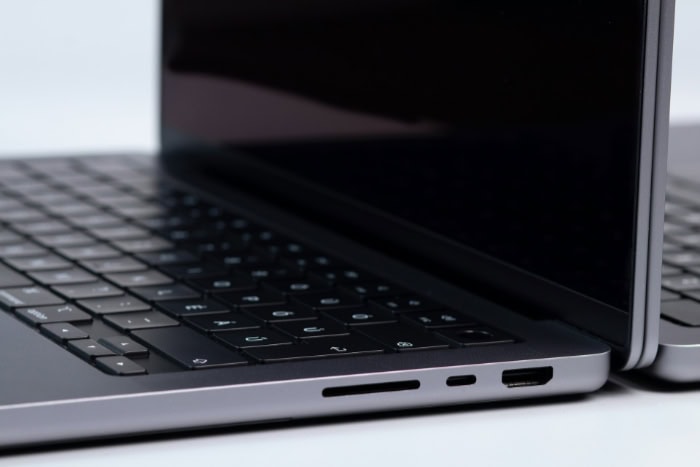
Device compatibility is a crucial aspect when comparing USB-A and USB-C connectors. As technology evolves, the adoption of these connectors varies across different devices and platforms.
Common Device Implementations
USB-A connectors have been the standard for many years and are still widely used in a variety of devices. Desktop computers typically feature multiple USB-A ports for connecting peripherals such as keyboards, mice, external hard drives, and printers.
Many laptops, especially older models, also include USB-A ports. Other devices that commonly use USB-A include gaming consoles, televisions, car stereos, and various charging adapters.
USB-C, being the newer standard, is rapidly gaining popularity and is increasingly found in modern devices. Many recent smartphone models, particularly Android devices, have adopted USB-C as their primary charging and data transfer port.
New laptops, especially ultrabooks and high-end models, often feature one or more USB-C ports, sometimes replacing all other ports entirely. Tablets, digital cameras, and portable gaming consoles like the Nintendo Switch also utilize USB-C connectors.
Additionally, USB-C is becoming more common in accessories such as headphones, external SSDs, and docking stations.
The trend in device implementation is clearly moving towards USB-C, with many manufacturers opting for its versatility and improved capabilities.
However, USB-A remains prevalent, especially in devices and peripherals that prioritize backward compatibility or target markets where USB-C adoption is slower.
Legacy Hardware Support
One of the challenges in the transition from USB-A to USB-C is the support for legacy hardware. USB-A has been the standard for decades, resulting in a vast ecosystem of devices and peripherals that rely on this connector type.
This includes older external hard drives, printers, keyboards, mice, and numerous other accessories that many users still own and use regularly.
USB-C, while offering improved performance and versatility, does not directly support these legacy devices without adapters.
This can create compatibility issues for users who want to use their existing USB-A devices with newer USB-C equipped computers or smartphones.
However, it's worth noting that USB-C is designed to be backward compatible with earlier USB standards in terms of data protocols. This means that with the appropriate adapter, USB-C ports can support older USB devices, maintaining a bridge between new and old technologies.
Adapter Requirements
The coexistence of USB-A and USB-C in the current technological landscape often necessitates the use of adapters. These adapters allow devices with different USB port types to communicate and function together. Some common adapter types include:
- USB-C to USB-A adapters: These allow USB-A devices to connect to USB-C ports on newer computers or smartphones.
- USB-A to USB-C adapters: These enable USB-C devices to connect to older computers or chargers with USB-A ports.
- USB-C to HDMI or DisplayPort adapters: These allow USB-C equipped devices to connect to external displays that use traditional video ports.
- Multi-port adapters or hubs: These expand a single USB-C port into multiple ports of various types, including USB-A, HDMI, Ethernet, and more.
The need for these adapters can be seen as a temporary inconvenience during the transition period from USB-A to USB-C.
However, they play a crucial role in ensuring that users can continue to use their existing devices while gradually upgrading to newer, USB-C compatible hardware.
Cross-Platform Usage
USB-A and USB-C connectors differ in their cross-platform usage capabilities. USB-A, being the older and more established standard, enjoys widespread support across various operating systems and device types.
It's recognized and functional on Windows PCs, Macs, Linux systems, gaming consoles, and many other platforms without requiring additional drivers or software in most cases.
USB-C, while newer, was designed with cross-platform compatibility in mind. Its ability to support multiple protocols makes it highly versatile across different platforms.
For instance, a USB-C cable can be used to connect an Android phone to a Windows PC, a MacBook to an external display, or a Nintendo Switch to a power bank.
Moreover, USB-C's support for the USB Power Delivery standard allows for a more unified charging solution across different devices and platforms.
This means that, in many cases, a single USB-C charger can be used for a smartphone, laptop, and tablet, regardless of the manufacturer or operating system.
However, it's important to note that while USB-C provides the potential for seamless cross-platform usage, the actual functionality can vary depending on the specific implementation by device manufacturers.
Some features, like video output or fast charging, may require specific hardware support or software drivers to function properly across different platforms.
Advanced Features
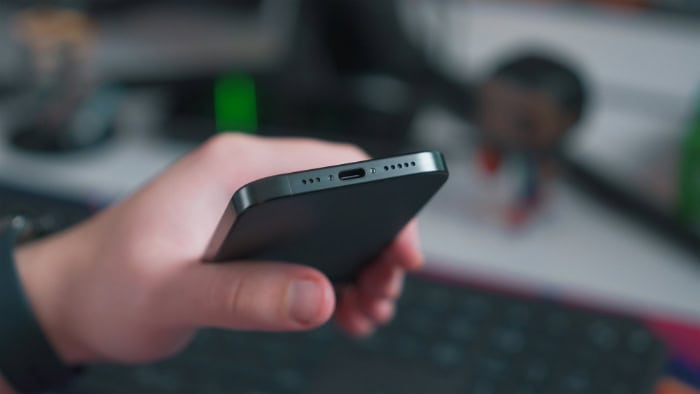
USB-A and USB-C connectors offer more than just data transfer and power delivery. They also support a range of advanced features that enhance their functionality and versatility.
These features include video output capabilities, alternate mode functionality, Thunderbolt integration, and audio transmission.
Video Output Capabilities
USB-C has a significant advantage over USB-A when it comes to video output capabilities. While USB-A ports can support video output through USB DisplayLink technology, it requires additional hardware and drivers, making it less convenient and less widely supported.
USB-C, on the other hand, has native video output capabilities thanks to its support for DisplayPort and HDMI alternate modes. This means that a USB-C port can directly output video to a compatible monitor or display without the need for extra hardware or adapters.
USB-C can support resolutions up to 4K and even 5K in some cases, depending on the implementation and the capabilities of the connected display.
This native video output support makes USB-C a versatile solution for connecting laptops or smartphones to external displays, projectors, or TVs.
It simplifies the process of extending or mirroring a device's screen, making it easier to deliver presentations, watch videos, or work on multiple screens without the need for dedicated video ports.
Alternate Mode Functionality
Alternate mode is a feature exclusive to USB-C that allows the connector to support various non-USB protocols. This capability is made possible by the USB-C connector's design, which includes dedicated pins for alternate mode functionality.
Some of the most common alternate modes supported by USB-C include:
- DisplayPort: Enables direct video output to DisplayPort-compatible monitors and displays.
- HDMI: Allows connection to HDMI displays and TVs without the need for separate adapters.
- Thunderbolt: Provides high-speed data transfer, video output, and power delivery through a single USB-C port (more on this in the next section).
- MHL (Mobile High-Definition Link): Supports mobile device connections to displays and TVs.
- VirtualLink: A specialized alternate mode designed for VR headsets, combining video, data, and power in a single cable.
The alternate mode functionality of USB-C makes it a highly versatile connector, capable of replacing multiple dedicated ports on a device. This allows for slimmer and more streamlined device designs while still providing a wide range of connectivity options.
Thunderbolt Integration
Thunderbolt is a high-performance protocol developed by Intel and Apple that combines high-speed data transfer, video output, and power delivery in a single connection.
While Thunderbolt has its own connector type (Mini DisplayPort), the latest versions, Thunderbolt 3 and Thunderbolt 4, use the USB-C connector.
The integration of Thunderbolt with USB-C brings several advantages:
- High-speed data transfer: Thunderbolt 3 and 4 support data transfer speeds up to 40 Gbps, making them ideal for demanding applications like video editing, large file transfers, and external GPU setups.
- Daisy-chaining: Thunderbolt allows multiple devices to be connected in a daisy-chain configuration, reducing the need for separate ports on the host device.
- Charging: Thunderbolt 3 and 4 support USB Power Delivery, enabling charging of laptops and other devices with up to 100W of power.
- Compatibility: Thunderbolt 3 and 4 ports are compatible with regular USB-C devices, ensuring a wide range of connectivity options.
It's important to note that while all Thunderbolt 3 and 4 devices use USB-C connectors, not all USB-C ports support Thunderbolt. Devices must have specific hardware and firmware support to enable Thunderbolt functionality.
USB-A connectors do not support Thunderbolt directly, but Thunderbolt docks and adapters with USB-A ports can provide compatibility with older USB devices.
Audio Transmission
Both USB-A and USB-C connectors support audio transmission, but they do so in different ways. USB-A devices can transmit audio through the USB Audio Device Class (ADC) specification.
This allows USB-A ports to connect to external audio devices like headsets, microphones, and speakers. However, this audio transmission is limited to digital audio and requires the connected devices to have compatible hardware and drivers.
USB-C takes audio transmission a step further with its support for analog audio through the Audio Adapter Accessory Mode. This mode allows USB-C ports to directly output analog audio signals, eliminating the need for separate audio jacks on devices.
This is particularly useful for smartphones and laptops, as it allows for the use of regular 3.5mm headphones and earphones through the USB-C port.
Additionally, USB-C's support for DisplayPort alternate mode enables audio transmission alongside video over the same connection.
This simplifies the process of connecting devices to external displays or home theater systems, as a single USB-C cable can carry both high-quality video and audio signals.
The audio capabilities of USB-C have led to the development of new audio accessories, such as USB-C headphones and earphones that can draw power from the device they're connected to, eliminating the need for separate batteries.
Real-World Applications
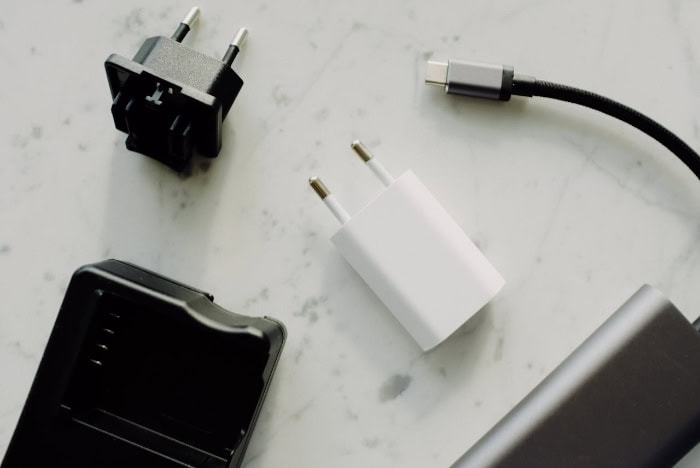
The differences between USB-A and USB-C connectors have significant implications for their real-world applications.
From mobile device charging to external display connectivity, data storage solutions, and professional equipment usage, the choice between USB-A and USB-C can greatly impact user experiences and device capabilities.
Mobile Device Charging
Mobile device charging is one of the most common real-world applications for USB connectors. USB-A has been the standard for charging smartphones, tablets, and other portable devices for many years.
Most mobile devices come with USB-A to USB-C cables, allowing them to charge from USB-A ports on computers, wall adapters, or power banks.
However, with the growing adoption of USB-C in mobile devices, USB-C to USB-C charging is becoming more prevalent. USB-C's support for USB Power Delivery (USB-PD) allows for faster charging speeds and higher power output compared to USB-A.
Many modern smartphones and tablets can take advantage of USB-PD to charge their batteries more quickly, reducing downtime and improving user convenience.
USB-C's reversibility also makes it easier to plug in charging cables, eliminating the frustration of trying to insert the connector the right way up.
Additionally, USB-C's ability to handle higher power output means that it can be used to charge larger devices like laptops, which typically require more power than USB-A can provide.
External Display Connectivity
Connecting devices to external displays is another important real-world application for USB connectors. USB-A has limited native video output capabilities, often requiring additional hardware like DisplayLink adapters to connect to external monitors or projectors.
USB-C, on the other hand, has native support for video output through DisplayPort and HDMI alternate modes. This allows USB-C equipped devices, such as laptops and smartphones, to connect directly to external displays without the need for extra adapters or dongles.
USB-C can support high-resolution video output, including 4K and even 5K displays, depending on the implementation.
This simplifies the process of connecting devices to external displays in various settings, such as offices, classrooms, and home entertainment systems.
With a single USB-C cable, users can extend or mirror their device's screen, making it easier to deliver presentations, collaborate on projects, or enjoy multimedia content on larger displays.
Data Storage Solutions
Data storage is another critical real-world application for USB connectors. USB-A has been widely used for connecting external hard drives, USB flash drives, and other storage devices to computers and laptops.
These devices have become essential for backing up data, transferring files between systems, and expanding storage capacity.
USB-C is also compatible with a wide range of data storage solutions, including external SSDs, USB-C flash drives, and high-capacity external hard drives. USB-C's higher data transfer speeds, particularly with USB 3.1 Gen 2 and USB 3.2 Gen 2×2 standards, allow for faster file transfers compared to USB-A.
This can significantly reduce the time needed to backup large amounts of data or transfer high-resolution media files.
Additionally, USB-C's reversibility and compact size make it more convenient to connect and disconnect storage devices, particularly for users who frequently switch between multiple systems or need to access their data on the go.
Professional Equipment Usage
USB-A and USB-C connectors are used extensively in professional equipment across various industries. In the audio and video production sector, USB-A has been used to connect microphones, audio interfaces, and video capture devices to computers for recording and editing purposes.
However, USB-C is gaining popularity in this field due to its higher bandwidth and ability to support advanced features like audio transmission through the Audio Adapter Accessory Mode.
In the photography and videography industry, USB-C is becoming the preferred connector for transferring high-resolution images and footage from cameras to computers. Many professional cameras now feature USB-C ports, allowing for faster data transfer speeds and more efficient workflows.
USB-C's higher data transfer speeds and power delivery capabilities can benefit these applications, enabling faster data processing and more efficient power management.
The gaming industry also relies on USB connectors for connecting peripherals like gaming mice, keyboards, and controllers.
While USB-A has been the standard for many years, USB-C is starting to appear in newer gaming devices, offering faster data transfer speeds and the ability to charge devices while in use.
Conclusion
USB-A and USB-C connectors represent different generations of technology, each with its own strengths and applications.
USB-A's widespread adoption and compatibility with legacy devices ensure its continued relevance in many settings.
However, USB-C's advanced features, including faster data transfer speeds, improved power delivery, and versatile connectivity options, position it as the future of device interconnectivity. The transition from USB-A to USB-C reflects the evolving needs of users and manufacturers alike, prioritizing speed, efficiency, and versatility.
While adapters may be necessary during this transition period, the long-term benefits of USB-C's capabilities are clear. Users can expect a more streamlined experience with fewer cables and ports, enhanced performance across various devices, and greater flexibility in how they connect and interact with their technology.
Both USB-A and USB-C will likely coexist for some time, but the trend towards USB-C adoption signals a significant shift in how we approach device connectivity and functionality.


